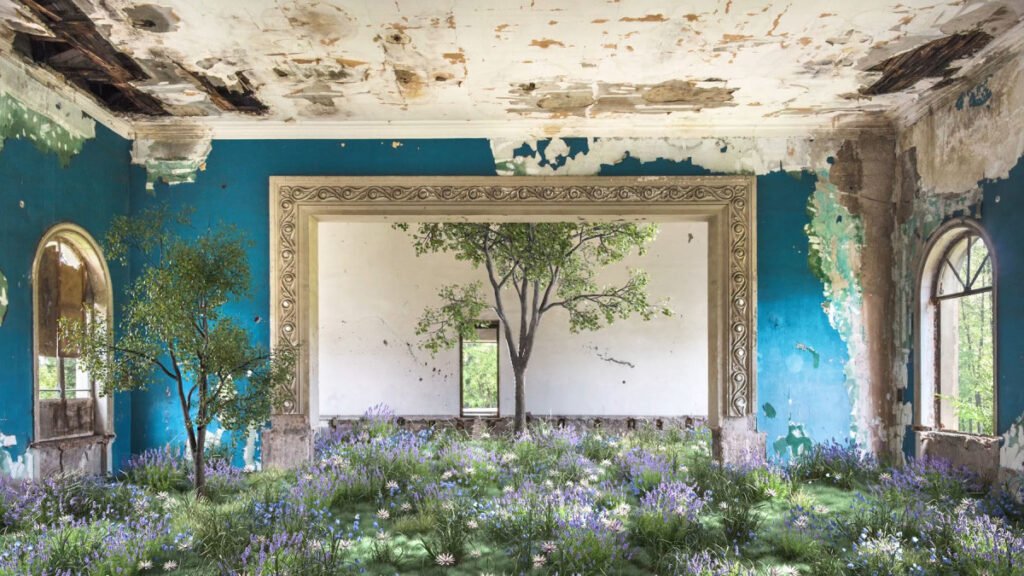Understandably, time is out of joint in these artworks. Each one creates the sense of a perpetual moment, one in which the architectural setting stretches backwards in time—not just to 20th century Soviet Russia, but far beyond, to the Ancient Greek and Roman motifs of neoclassical Stalinist architecture—while the accelerated greenery points forward. They may have the appearance of ancient ruins, Koopmans says, “but, in fact, they’re only 35 or 40 years old.”
“I think it’s fascinating, because it has a timeless quality and it’s something that’s bigger than us,” says Koopmans. “You have these grandiose ideologically-based societies or empires, and as powerful as they may be, time erases it all, essentially. Nature is the one constant force that prevails.”
Koopmans and Wexell are repeatedly reminded that these forgotten places they love to capture are only forgotten for so long. Nature isn’t the only rampant force around: The rapid construction of megacities and their associated infrastructure is spreading a wave of speculation, demolition and construction across the planet. In Georgia—a country undergoing a seismic construction boom—Koopmans tells me they scouted an abandoned school in Tbilisi to shoot, but when they returned, just a week later, it was gone. Not just reduced to rubble, but utterly disappeared—enough to make them question their maps—only a dark stretch of dirt remaining where it had once been.






